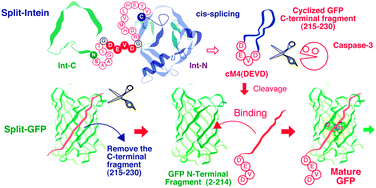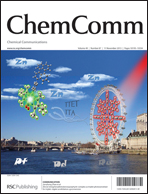Creation of a caspase-3 sensing system using a combination of split-GFP and split-intein†
Abstract
A genetically encodable caspase-3 sensing system has been created using self-assembling split-GFP, in which a C-terminal fragment is “covalently” cyclized via a caspase-3 substrate sequence mediated by split-intein. The specific cleavage of the cyclic C-terminal fragment by caspase-3 induces the GFP reassembly and fluorescence recovery.


 Please wait while we load your content...
Please wait while we load your content...